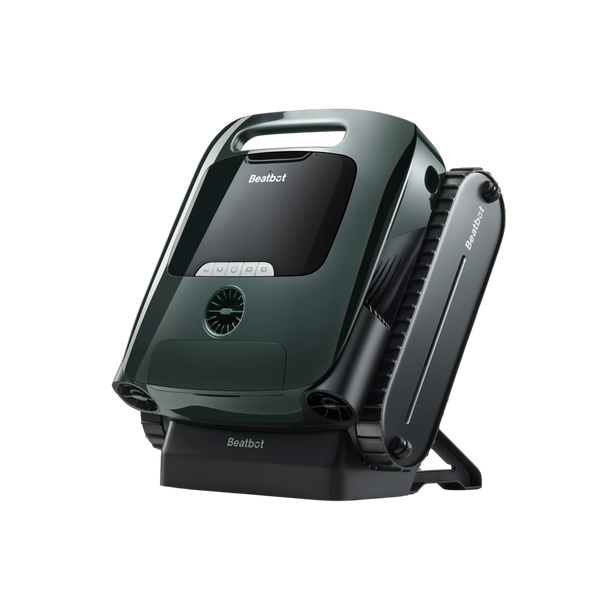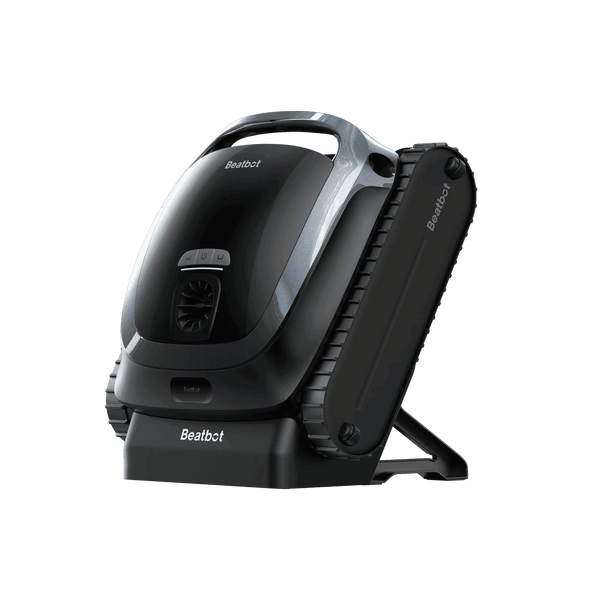Taming Waterlogged Yards: How to Address Yard Water Pooling
That puddle in your yard isn't just ruining your shoes. Standing water near your pool deck creates a chain reaction of problems you'll want to stop - fast. Skip the band-aid fixes and tackle your water pooling issues head-on with solutions that actually work.
Table of content

The Real Impact of Standing Water
Those innocent-looking water pools pack a nasty punch. Water seeps into your pool deck's foundation, weakening concrete and creating cracks you won't spot until serious damage hits. Worse yet, that standing water turns your yard into mosquito central, breeding swarms that drive away swimmers and create health risks.
But here's the kicker - standing water doesn't play nice with your pool structure either. It undermines the soil supporting your pool walls, potentially leading to shifting and structural issues that cost thousands to fix. Plus, that excess moisture feeds algae and mold growth, turning your pristine poolside into a slippery hazard zone.
Spotting Problem Areas
Walk your yard after a good rain - that's when water problems show their true colors. Watch where puddles form and how long they stick around. Healthy yards drain within 24 hours, so lingering water spots spell trouble.
Look for dark, spongy grass patches - they're telling you water's getting trapped underground. Check your soil too. Grab a handful - if it clumps like clay or feels rock-hard, you've got drainage issues brewing. Pay special attention to areas where your lawn meets the pool deck. Soil should slope away from structures, not create mini-lakes against them.
Common Culprits Behind Water Pooling
Poor Grading
Your yard's slope matters more than you'd think. Water follows gravity, and flat or dipped areas become collection points. That perfectly level yard might look great, but it's probably working against you. Check your grading near the pool - even a slight tilt toward your pool deck spells future headaches.
Soil Compaction
Years of foot traffic, pool equipment, and heavy furniture turn soil into a water-blocking barrier. Compacted soil acts like concrete, forcing water to pool instead of drain. Breaking up this dense layer often solves persistent puddling problems.
Drainage System Issues
Clogged drains, damaged pipes, or poorly planned drainage routes create water chaos. Those french drains installed years ago? They might be packed with sediment now, forcing water to find new paths - usually right where you don't want it. Spot check your drainage systems regularly, especially before rainy seasons hit.
Quick Fixes for Immediate Relief
Look, sometimes you need fast solutions while planning bigger fixes. A few smart moves can stop water from ruining your next pool party. Start by breaking up compacted soil - grab an aerator and punch holes in those problem spots. This quick fix creates escape routes for trapped water.
Got low spots? Build them up. Mix sand with topsoil for a quick-drain solution that won't wash away in the next rain. Skip the cheap fill dirt - it'll just create another clay barrier. And while you're at it, clear those drainage paths. Pull debris from drain covers, and flush out pipes with a garden hose. Sometimes the simplest fixes pack the biggest punch.
Long-Term Solutions That Work
French Drains
Skip the surface fixes - go underground where real drainage happens. French drains act like invisible rivers, moving water away through gravel-filled trenches. The key? Proper slope and placement. Map your water's natural flow, then work with it, not against it. A well-planned French drain system turns water problems into water solutions.
Dry Wells
Think of these as your yard's emergency water storage. They catch excess water and slowly release it into deeper soil layers. Perfect for spots where French drains aren't practical. One catch - you'll need to dig deep, usually 4-6 feet down. But once installed, they work silently year after year.

Smart Landscaping Strategies
Ditch the ordinary fixes. Smart plant choices create natural drainage networks while boosting your pool area's looks. Water-loving plants like ribbon grass and sedge drink up excess moisture. Plant them strategically in trouble spots - they'll work 24/7 controlling water flow.
Consider rain gardens in low spots. These planted depressions do double duty - they look great and handle serious water volume. Layer different plant heights, mixing ground covers with taller species. Each plant type filters and moves water differently, creating a natural drainage system that actually improves your soil over time.
And don't forget ground cover choices near your pool. Skip water-blocking mulch in problem areas. Try river rock or gravel instead - they let water flow through while keeping soil in place. Mix in drought-resistant plants between rocks for a low-maintenance solution that handles both dry spells and downpours.
Equipment Essentials
Tackle water issues head-on with the right gear. Skip those flimsy garden tools - they won't cut it. Get yourself a sturdy drain spade for trenching work. Its narrow blade slices through soil like butter, making drain installation way easier. Add a laser level to your kit - eyeballing slopes leads to drainage disasters.
Need to test soil drainage? Grab a soil probe. This simple tool tells you exactly where water gets stuck. For larger jobs, rent a power auger. It'll save your back and punch through tough soil layers that block drainage.
When to Call the Pros
Face it - some water problems need expert eyes. Watch for warning signs like persistent flooding even after DIY fixes, or water creeping toward your pool's foundation. If your yard's slope involves multiple properties or you spot sinkholes forming, grab your phone.
Cost factors? Sure, professional drainage work hits the wallet harder than DIY. But compare that to fixing a cracked pool shell or replacing a collapsed deck. Smart money tackles big drainage issues early, before they morph into major structural headaches.
Making Your Solution Last
Skip the set-it-and-forget-it mindset. Even the best drainage systems need regular checks. Mark your calendar for monthly drain cleanouts during peak leaf season. Test soil compaction yearly - catching problems early saves major hassle later.
Watch how water moves during heavy rains. Your drainage patterns might change as landscapes mature and soil settles. Stay flexible with your maintenance plan. What worked last year might need tweaks this season.

The Bottom Line
Water problems don't fix themselves. They grow, spread, and damage everything in their path. But now you've got options. Start small with quick fixes if you need to, but keep your eyes on long-term solutions that actually solve the problem.
Remember: good drainage protects more than your yard - it shields your pool investment too. Take action before standing water turns into standing repair bills. Whether you tackle it yourself or bring in the pros, just make sure you handle it. Your pool area deserves better than becoming a swamp.
Get moving on those trouble spots. Test your soil, check your slopes, and make a plan. Future you will thank present you for taking care of business now, instead of dealing with major repairs later.
Relative Blogs
About the author



















